MIDRANGE MURLOC PALADIN DECK LIST GUIDE
- Last updated Apr 20, 2017 (Un'Goro Launch)
- Edit
- |
Wild
- 22 Minions
- 6 Spells
- 2 Weapons
- Deck Type: Ranked Deck
- Deck Archetype: Midrange Paladin
- Crafting Cost: 10460
- Dust Needed: Loading Collection
- Created: 4/21/2017 (Un'Goro Launch)
- Daolh2610
- Registered User
-
- 4
- 19
- 28
-
Battle Tag:
N/A
-
Region:
N/A
-
Total Deck Rating
130
Our Un’Goro Midrange Paladin deck list guide will teach you how to pilot this popular Season 37 deck! Our guide features mulligan, play, and card replacement strategies!
Introduction
Midrange Paladin is one of the most classic Hearthstone decks, but the Murloc twist is new to Un’Goro. The deck used to be very strong, but then it lost most of its power with the 2016 Standard rotation, because Paladin was left with almost no early game. Good deck builders have figured out that the bad early game can be patched up with the Murloc package, while the deck’s powerful mid/late game stays intact.
There are two approaches to the Midrange Murloc Paladin and I think that both of them are viable. It’s hard to tell you which one is better, so I’ll write about the one I’ve played more. The list in this guide was created by Machamp, who hit #1 Legend on the Asian server. It’s a slower and more mid-late game oriented list. Alternatively, you can try a more aggressive approach that relies less on the control tools and more on the rushing the opponent down. For example, this deck by Tholwmenos, which he hit #1 Legend on EU with.
Midrange Paladin Murloc Mulligan Strategy & Guide
I’ll divide the mulligan section into two – against fast decks and against slow decks. Fast decks are generally the Aggro decks (e.g. Pirate Warrior) or high tempo Midrange decks (e.g. Midrange Hunter). Slow decks are slower Midrange and Control decks.
VS FAST DECKS
Higher Priority (keep every time):
- Vilefin Inquisitor – The only 1-drop in the deck, so you obviously want to keep it. It adds Murloc tribe to your Hero Power, meaning that it will synergize with all the Murloc cards you play.
- Rockpool Hunter – It’s best follow up to the Vilefin Inquisitor, or any other early Murloc. Pretty straightforward, if you hit the buff, it’s amazing. But even if you don’t, it’s something you can drop on turn 2 at least.
- Hydrologist – Alternative 2-drop. It’s weaker than Rockpool Hunter stat-wise, but you can pick some early Secret that can make a difference. Better than Hero Powering on turn 2.
- Aldor Peacekeeper – The card seems to be more of a late game play, but it’s amazing against Aggro in the early game. While you don’t kill anything, you can pretty much neutralize any threat. Great answer to the opponent’s 3-drops – turning that Bloodsail Cultist or Misha into 1/4 and curving out with a 3/3 is quite strong.
Lower Priority (keep only if certain conditions are met):
- Golakka Crawler – Auto-keep against decks running Pirates, so things like Pirate Warrior or any kind of Rogue. Against other decks you want to throw it away to draw your early Murlocs more consistently.
- Murloc Warleader – This card is either amazing or useless. Keep it only if you have other small Murlocs in your starting hand, especially Vilefin Inquisitor. It’s really bad by itself, but it gets much better if you can start buffing your stuff.
- Stonehill Defender – Only with a good early game, like 1-drop and 2-drop. The card is quite good, especially if you get Wickerflame Burnbristle (probably the best one against Aggro), but it’s too slow to keep if you have nothing to play before it.
- Truesilver Champion – If your early game is okay or on the Coin. It’s too late to play it on turn 4 if Aggro deck has 3-4 minions by that time.
- Consecration – Against board flood decks like Aggro Shaman or Zoo Warlock. It’s a hard call usually, because keeping it decreases the chance you curve out, but at the same time it can save your skin on turn 4.
VS SLOW DECKS
Higher Priority (keep every time):
- Vilefin Inquisitor – You really want to change that Hero Power and there is no better time than doing it right away, on curve.
- Rockpool Hunter or Hydrologist – You want to curve out, but you don’t need multiple 2-drops. If you can choose, Rockpool Hunter should be better on turn 2 if you have a turn 1 Murloc and Hydrologist should be better if you don’t.
- Stonehill Defender – It might be one of the best cards in your deck against slower decks. You have a HUGE chance to get one of the Paladin Taunts offered, and 3 out of 4 are big guys that you really want to have in slow matchups. The card gives you so much value, like playing 3-4 Tirions in a single game (yes, it can happen).
Lower Priority (keep only if certain conditions are met):
- Golakka Crawler – Well if some slower deck runs Pirates, then keep it. Right now such decks are very uncommon, I’ve seen some Elemental Shamans with a Pirate package, but that’s it. In case the meta changes and such a deck pops out, keep it against it.
- Aldor Peacekeeper – Keep against decks that can put big minions on the board early. Handlock and Silence Priest are good examples. However, in most of the matchups you prefer to save it for later, and so you want to mulligan it away, as you want something to play on the curve instead.
- Murloc Warleader – With other early game Murlocs, you don’t want to keep it by itself, because it’s just a 3/3 for 3 if you don’t hit the buff value. Turn 1 Vilefin into turn 2 Rockpool into turn 3 Warleader is an amazing curve, but turn 1 pass, turn 2 Hero Power and turn 3 Warleader is one of the worst curves you can have.
- Gentle Megasaur – Similarly to Warleader. Keep if you have other early Murlocs, especially Vilefin Inquisitior, don’t keep if you don’t.
- Truesilver Champion – Mid game board control is very important and there is pretty much no slow matchup where Truesilver is a bad card. However, you also want to curve out, so if your curve is really bad, you throw Truesilver away.
Midrange Paladin Murloc Play Strategy
Midrange Murloc Paladin is a deck that combines the best from both worlds and that’s why playing it might be tricky sometimes. You need to learn how to play into your hand in the best way. Sometimes you want to try to rush your opponent down with the early Murlocs, other times you want to play a slow, Control, value-oriented game and sometimes you can switch the play styles in between depending on the situation and the cards you draw.
One of the best things about this deck is that you can adapt quite well to the matchup and to the situation. You can play a slow game and when the time comes, flood the board with Murlocs, Adapt all of them and push for 2-turn lethal. On the other hand, if your early game rush plan fails, it doesn’t automatically mean that you lose the game. You have tons of value tools in your deck and ways to go for the longer game even if your initial plan didn’t work out.
Vs Aggro
If you’re playing a slower deck vs Aggro, there is always one plan – survive. This deck has some nice early game plays and it runs quite a lot of defensive tools, and so Aggro matchups aren’t that bad at all. Taking board control is most important. If you survive until the mid game with a decent life total, there is almost no way you lose. Don’t think about racing an Aggro deck, even if you get the perfect aggressive start it simply makes no sense.
Early game tempo is key. Try to play some minion every turn, even if it’s not optimal. Avoid your Hero Power unless you have nothing else to play. Murloc Warleder on 3 with no other Murlocs on the board? Sure, if you can’t do anything else. Even a 3/3 Aldor on turn 3 if you have nothing else to do is alright. You just want to curve out, if you survive until your turns 6 you should probably win from that point.
If your opponent has taken over the board completely, e.g. it’s Aggro Druid who buffed his board to 3-4 health, and you have the Equality + Consecration combo, waiting until turn 6 will most likely be too late. You can play turn 3 Equality and hope that your opponent can’t play something big next turn. Then on turn 4 you clear whatever you’ve put down to 1 health with Consecration. That takes you two turns, but it sometimes might be the only way to get back on the board against very powerful starts (another example might be Pirate Warrior with turn 2 Bloodsail Raider and turn 3 Frothing).
Try to stick a minion on the board going into turn 6. With 2x Spikeridged Steed in the deck, it’s very likely that you will draw at least one. And the card is like an Aggro killer. Even a simple 1/1 turns into 3/7 Taunt, which spawns a 2/6 Taunt. Every 6+ mana play either has a Taunt or heals you. So once you get to turn 6, you nearly can’t lose. So that’s your goal, try to survive at any cost. You don’t have to be ahead by a lot, you just need to not fall behind so much that even those things won’t get you back.
When it comes to the Discover picks, those shouldn’t be very hard.
- Hydrologist – you pick Noble Sacrifice whenever you can. While early it usually trades for a 1/1, later in the game it can block a Charge minion, a big weapon hit etc. Alternatively, you can pick Getaway Kodo and play it before dropping a Taunt. Taunt needs to die, so it will bounce back to your hand. Repentance might be a good play before your opponent’s turn 5 if he runs a deck playing Bittertide Hydra.
- Stonehill Defender – Don’t be too greedy here. When you lose a game against Aggro, you usually lose with tons of cards in your hand. Picking something expensive, like Tirion, is often not a good idea, because you will die before you play it. Wickerflame Burnbristle is often the best pick, because it’s a cheap Taunt that requires 2 hits to get through + heals you usually for at least 4. But other 2-4 mana Taunts are often much better choices than the big, 6+ mana Taunts. You have enough late game survival yourself, you just need to get there.
- Ivory Knight – You should either pick the highest mana cost card, no matter what it is, just to heal for as much as possible OR pick a healing card like Forbidden Healing or Holy Light if you can afford to save heal for later. Forbidden Healing is a great choice if you know that you won’t die soon. Then you can play it on turn 8 or 9 for much more healing than Ivory Knight could ever get you.
Vs Control
While in Aggro matchups you always take the role of a Control player, in slow matchups you often want to be the Beatdown. That’s your initial game plan, until it fails at least. Let’s say that you play against Taunt Warrior and get a fast, Murloc-heavy start with Murlocs on 1, 2, 3 and then Gentle Megasaur. If your opponent didn’t counter your start, it might be worth to start pushing and let’s say pick +3 Attack or Windfury for the Murlocs, instead of Health or Divine Shield. Your board dies to Brawl one way or the other, but with the more aggressive approach, you might be able to kill the opponent before he reacts. Of course, there is some merit to the defensive options too, like playing against damage AoEs so your minions survive longer, or being able to trade more easily while still keeping your Murlocs alive. But that’s the point – knowing which ones to pick depending on the situation might be one of the most important decisions when playing this deck.
But let’s be honest, you will rarely win games by just rushing the opponent down. For me, it happened maybe in 1 or 2 games out of 10 I won. What about the rest, the majority of the matches? Well, you play a more classic Midrange style. You want to be on the board, be in control of the game, play proactively, dictate the trades and the pace of the game. It can really get you far. Forcing your opponent into answering might lead to him having to use inefficient answers. Remember that you still don’t want to engage in a 100% value war, because if you take the games to fatigue, an average Control deck will win. You want to slowly, but steadily push for damage and then close up the game with a big play like board of Murlocs into Gentle Megasaur, Sunkeeper Tarim on 3-4 small minions or even Tirion Fordring. The last one is incredibly valuable, because almost no one runs weapon destruction right now – 5/3 Ashbringer is 15 damage over 3 turns and that’s A LOT.
Baiting AoEs is important. The best case scenario is when you set up a board that’s pretty scary, but you won’t lose too much when it gets AoE’d. For example, having a bunch of 1/1 Tokens and playing Warleader + Gentle Megasaur. It will probably ask for an AoE, but you can easily refill after. Spikeridged Steed is good anti-AoE protection. Not only it gives your minion lots of health, which makes it harder to AoE, but if your opponent plays some board wipe, you’re still left with a 2/6 on your next turn.
Sunkeeper Tarim is an amazing tool for surprise burst damage turns. Midrange Paladin was never a bursty deck and people rarely play around huge burst turns, which you can use to your advantage. Tarim is a great swing card. Let’s say that your opponent is at 15 and just played a big Taunt. Now if you have 5 small minions on the board and Truesilver, you can actually kill him. But Tarim is much more flexible than that. You can use it when your opponent plays a single big threat to kill it easily. You can use it when you have a few minions and you want to trade up. You can also use it defensively, against 2-3 midrange minions, making them all less scary.
Try to play The Curator as soon as possible, even on curve. The more you wait, the lower the chance of you drawing 3 cards will be. While drawing a Murloc will nearly always happen, the list only plays 2 Beasts and a single Dragon, making those easy to draw before you drop The Curator. The card is always good, even when drawing 1 it’s okay, but it’s always better to draw 2 or 3 than 1.
Discover cards are the best way to gain value in slow matchups. Here is what you should be picking:
- Hydrologist – Getaway Kodo is the best pick in most of the slow matchups, because you might be able to bounce some high value cards and replay them. But other than that, Repentance is good in the late game, especially if your opponent is out of “tempo plays” and has only big stuff left in his hand. Redemption can be situationally good, if you play it with only Tirion on the board. It gives you a 1 mana 6/1 With Divine Shield and Taunt. It’s very likely that it survives for another hit and then he refreshes your weapon. Great value.
- Stonehill Defender – It depends at which stage of the game you are, but generally you want to pick something big. Paladin Legendaries – Tirion Fordring and Sunkeeper Tarim – are the best ones, but Grimestreet Protector is also solid pick. Alternatively you can go for another big Taunt card like Bog Creeper or Sunwalker. At the same time, a cheap Taunt like Hired Gun can be great if you’re making a tempo push and you want something you can play right away (Hired Gun example comes on turn 6). You need to decide whether you want a value Taunt or tempo Taunt depending on how the game goes.
- Ivory Knight – In this case, there are tons of options and you usually pick whatever fits the situation. But couple of picks that come handy more often than the others in slow matchups are: Equality, Hammer of Wrath, A Light in the Darkness, Lay on Hands, Dinosize. You can also try to pick a Blessed Champion and hope that a big minion will stick for a double attack. For example, using it on Rag is an extra 8 damage and can really catch your opponent off-guard. But at the same time, it’s a risky move, because it might be a dead card if your opponent is constantly removing your big drops.
General Tips
- Equality combos best with Consecration for a full board clear, but it can also be used to trade few small minions up, similarly to Tarim. Let’s say that you have 2x 1/1 on the board and your opponent played two 6 health minions last turn. It might be a great time to play Equality and just trade your two 1/1’s into them. Sometimes it’s even worth it to use it against a single minions. If you Equality down a 8 health minion, it’s like a 7 damage for 2 mana, which is still great tempo move. On turn 10 you can also play the Equality + Primordial Drake combo for a full board clear with a big body on the board.
- Aldor Peacekeeper + Stampeding Kodo is a great combo that can destroy any big minion. If you have this combo in your hand, try to clear all the small minions your opponent plays, so once he drops something bigger it will be singled out and you will be able to hit it with this combo 100% of the time.
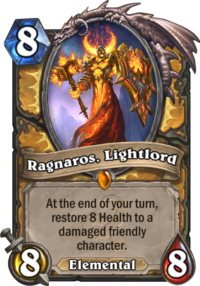
- Ragnaros, Lightlord doesn’t always heal your Hero – it can also heal your minions. It might be a good thing or a bad thing depending on a scenario. If you’re playing in a slow matchups, healing up minions after trading can be great. Sometimes Rag can stay on the board for 3-4 turns if your opponent doesn’t have hard removal, because it’s constantly healing itself after the trades. On the other hand, sometimes in the faster matchups you want to guarantee that heal on your Hero. If you have some damaged minions on turn you play Rag, Lightlord – try to trade them off. Even if that trade is inefficient, e.g. you trade a 3/1 into a 1/1, just do it to guarantee that 8 healing. At the same time, a common way to “counter” Rag after it’s already in play is your opponent playing a small AoE or trading some 1/1’s into your minions. It gives Rag many healing targets and makes it much less consistent. If you really need that 8 extra healing, you can always play Equality – it sets every minion’s health to 1, which means that nothing is damaged any more and Rag has 100% chance to heal your Hero.
- Sunkeeper Tarim can be tricky to use from time to time. First, you want to make all the good trades you can make before playing it. For example, if you have a 1/3 and your opponent has a 2/1, there is no point in playing Tarim first – you can trade those minions, still have a 1/1 and then turn it into a 3/3. Then you want to play all the small minions you can, like Hero Power, Vilefin Inquisitor or Hydrologist. It’s basically a free buff if you play them before dropping Tarim. Then you play your Tarim and make rest of the trades.
- A few 1/1 Murloc tokens can turn into a deadly weapon in the right scenario. Sunkeeper Tarim or Murloc Warleader + Gentle Megasaur on a bunch of 1/1’s that are ready to attack can work really well. They’re only 1/1’s, but first buffing them to 3 Attack and then giving them either +3 Attack or Windfury means that each of those small guys deals 6 damage instead of the 1 it was supposed to. You can get some lethals you wouldn’t think about with this kind of combo. Gentle Megasaur is great on your small Murlocs in general. Giving them Poisonous means that you can make great trades. Giving them Deathrattle: Spawn 2x 1/1 makes your board more AoE-proof. Remember that if you’re looking for a specific Adapt option, you have a 3/10 chance to get it.
- If you need some extra healing, you can always equip Truesilver Champion and attack the opponent’s Hero. It’s not much, but it’s 4 extra health over 2 turns, which might matter in an Aggro matchup or let’s say against Freeze Mage.
Midrange Murloc Paladin Card Substitutions
Sadly, Paladin lists these days are pretty expensive. If you’re aiming at the slower Paladin deck, you need to have a deep pocket or a lot of luck with pack openings. This deck runs 3 Legendaries (non-adventure) and multiple Epic cards and I have to say that most of them is important for the deck to function correctly. I’ll try my best to give as much replacements as I can, but it might be a bit hard this time around.
- There is no direct replacement for any of your 3 Legendaries (Sunkeeper Tarim, Ragnaros, Lightlord and Tirion Fordring), as each one of them has some unique effects that can’t be replicated too easily. However, here are some cards that can serve as the replacement for any of the slow cards in your deck: Wickerflame Burnbristle (another Legendary, but great in fast matchups), second copy of Primordial Drake (makes your Curator more consistent), Forbidden Healing (instead of Rag Lightlord), Finja, the Flying Star (can replicate some of the tempo swing turns Tarim could make), Grimestreet Protector (it’s quite solid and while nowhere near close the level of your Legends, it can be an okay budget replacement), Dinosize (can add some unexpected burst to the list), Vinecleaver (not as good as Tirion, but it’s a solid value weapon, which you can also use to push for a lot of face damage in the slower matchups).
- Your Murloc-related Epics: Vilefin Inquisitor, Murloc Warleader and Gentle Megasaur can’t be replaced. If you want to run a Murloc list, you just have to play them. If you don’t own them and don’t want to craft them, you can run a non-Murloc Midrange Paladin instead (although those lists seem to be a bit weaker).
- Primordial Drake – It’s a good card which I would recommend crafting, as it’s played in multiple meta lists. If you don’t have it, however, check one of the replacements I’ve listed for the Legendaries.
- The Curator and Ivory Knight are from Karazhan and if you don’t have it, there is – once again – no direct replacement for them. They’re pretty vital in the slower list, as they are great value tools. However, if you’re missing Karazhan, you can try going for a faster list which doesn’t run them instead – Murloc Paladin by Tholwmenos.
Closing
If you have any questions or suggestions, feel free to leave them in the comment section below. If you want to be up to date with my articles, you can follow me on Twitter.
Good luck on the ladder and until next time!
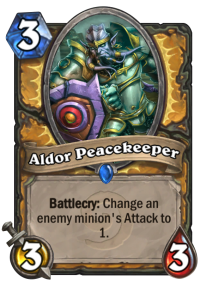
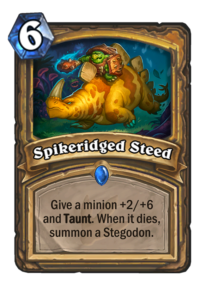
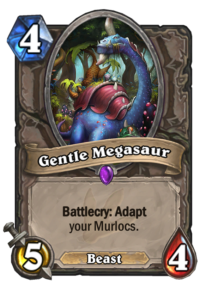
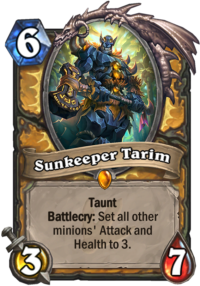
Comments